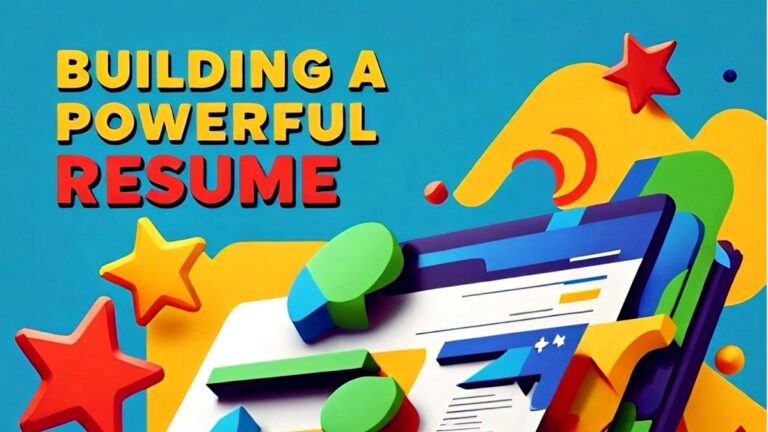What is a Resume?
A resume is a concise document that showcases your education, work experience, skills, and achievements to potential employers. Its primary purpose is to demonstrate your fit for a specific job opening and entice the reader to invite you for an interview.
A resume differs from a Curriculum Vitae (CV) in that a CV is a comprehensive document that covers your entire academic and professional history. In contrast, a resume is a tailored summary of your most relevant experiences and skills. Conversely, a bio is a brief overview of your professional brand and is often used on social media platforms or personal websites.
READ ALSO: How to Easily Gain Years of Work Experience.
Choosing the Right Resume Format
There are four main types of resume formats: Chronological, Functional, Combination, and Targeted.
- Chronological Resume: Best for those with a strong work history, this format lists your work experience in reverse chronological order, with the most recent experience first.
- Functional Resume: Suitable for those with gaps in employment or changing careers, this format emphasizes your skills and qualifications rather than your work history.
- Combination Resume: A mix of chronological and functional formats, this type of resume highlights both your work experience and skills.
- Targeted Resume: Customized for a specific job opening, this format tailors your experience and skills to match the job requirements.
Writing Your Header and Contact Information
Your header should include:
- Name: Use a clear and concise font, and make sure it’s the same as your LinkedIn profile and other online presence.
- Address: Include your city, state, and zip code, but consider omitting your street address for privacy reasons.
- Phone Number: Use a professional voicemail greeting and make sure your phone is always answered or has a professional voicemail message.
- Email: Use a professional email address that matches your name or a combination of your initials and last name.
- LinkedIn Profile: Include a link to your LinkedIn profile to showcase your professional online presence.
RELATED: High-Paying Career Paths for Students of Commerce.
Writing a Strong Professional Summary
Your professional summary should be a brief overview of your experience, skills, and achievements. It should encourage the reader to read further and highlight your unique value proposition. Use keywords from the job description to tailor your summary and make it specific to the job you’re applying for.
Highlighting Education and Certifications
- Degrees: List your highest level of education first, and include the name of the institution, degree earned, and date of graduation.
- Diplomas: Include any relevant diplomas or certificates, and make sure to mention any academic achievements or honors.
- Courses: List any relevant courses or training programs that demonstrate your skills and expertise.
- Certifications: Include any industry-specific certifications or licenses that are relevant to the job you’re applying for.
SEE ALSO: 5 Job Interview Mistakes To Avoid.
Emphasizing Work Experience and Achievements
- Job Descriptions: Use bullet points to describe your job responsibilities and achievements, and focus on the impact you made in each role.
- Accomplishments: Quantify your achievements by using numbers and statistics to demonstrate the impact you made.
- Skills: Highlight any relevant skills you used in each role, and make sure to mention any soft skills that are relevant to the job you’re applying for.
Including Relevant Skills and Tools
- Technical Skills: List any technical skills you have, including programming languages, software proficiency, and tools.
- Language Skills: Include any languages you speak fluently, and mention any language certifications or training.
- Soft Skills: Highlight any soft skills that are relevant to the job you’re applying for, such as communication, teamwork, or problem-solving.
Adding Volunteer Work, Hobbies, and Interests
- Volunteer Work: Include any relevant volunteer work or extracurricular activities that demonstrate your skills and character.
- Hobbies: Mention any hobbies or interests that are relevant to the job you’re applying for, or that demonstrate your creativity and problem-solving skills.
- Interests: Include any relevant interests that align with the company culture or job requirements.
READ ALSO: Getting Ahead in Any Career: 15 Essential Tips.
Proofreading and Editing
- Spelling and Grammar: Use a spell checker and grammar tool to ensure your resume is error-free.
- Consistency: Use a consistent font and formatting throughout your resume.
- Clarity: Use clear and concise language, and avoid using jargon or technical terms that may be unfamiliar to the reader.
Customizing Your Resume for Each Job Application
- Tailor Your Experience: Emphasize the experiences and skills that are most relevant to the job you’re applying for.
- Use Keywords: Use keywords from the job description to tailor your resume and make it specific to the job requirements.
- Research the Company: Research the company culture and values, and make sure your resume aligns with their expectations.
These guidelines will help you create a powerful resume that showcases your skills, experience, and achievements, and increases your chances of landing an interview if you follow them.


